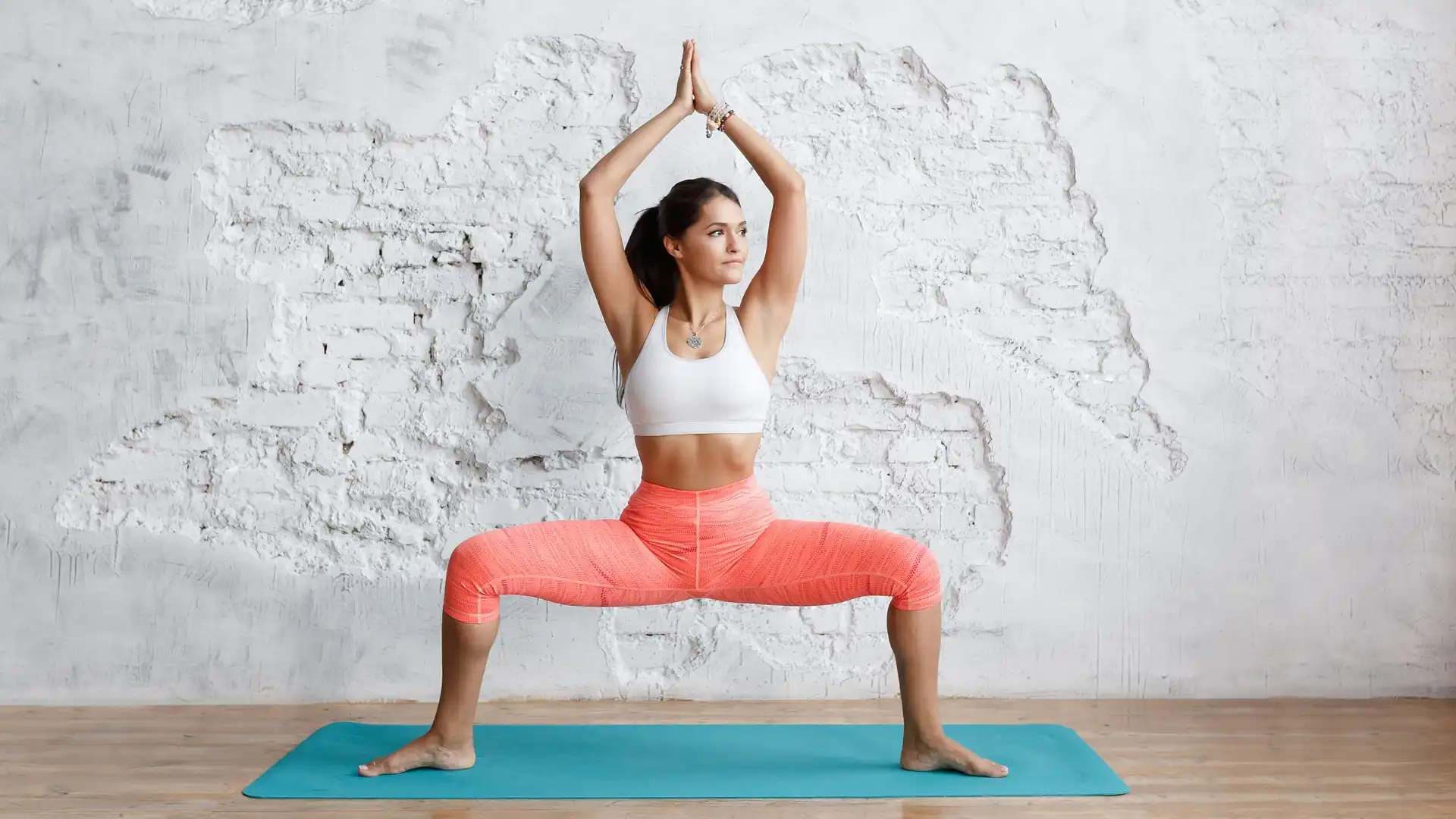Shore Up the Floor: 9 Ways to Help Your Yoga Students Engage Their Pelvic Floors

In my Pelvic Floor Yoga and Yoga Therapy courses, I emphasize the importance of adequate training and education of pelvic floor muscle (PFM) engagement with proper synergistic timing with other muscle groups with awareness, movement, and breath.
I received a great question from a yoga therapist at the International Association of Yoga Therapists annual Symposium on Yoga Therapy and Research where I was presenting a session on this topic. One of the participants asked, “how does a yoga therapist know if the student is properly engaging the pelvic floor muscles?” The simple answer to this question is, unfortunately, you don’t. Accurate measurement of PFM function and strength is difficult, even with the current tools of measurement we have such as direct skilled manual palpation or use of clinical observation skills with measuring devices such as ultrasound, EMG recordings, or MRI’s (Bo et al, 2005). However, these methods are not within the scope of practice of a yoga therapist or yoga teacher.
Additionally, some research shows that over 30% of women do not engage their PFMs correctly even after their first consultation of one-on-one training (WHO, 2002). Even if you think you are providing proper PFM engagement cueing in your classes, you really have no way of knowing if every student is engaging correctly. Furthermore, some evidence-based treatment guidelines advise against teaching a PFM contraction for certain conditions.
But for now, we can address this original question if we re-phrase it:
“How can a yoga professional enhance the probability of a person effectively engaging his or her PFM, while staying within the scope of practice?”
9 Ways of Optimizing Pelvic Floor Muscle Engagement
1) Education: a brief anatomy lesson of the PFMs explaining the difference between activating the compensatory muscles (gluteals, hip adductors, abdominals) vs. the actual PFMs can help your student understand PFM engagement and understand what a PFM contraction is not. Part of the education process is increasing awareness of and connection to one’s own PFMs. Note that the anal and urethral sphincters are part of the superficial layer of the PFMs. However, I feel it is important to note that when one is asked to engage their PFMs, they may potentially just clench the gluteals and anal sphincter, or think that stopping the flow of urine by contracting the urethral sphincter is a full PFM engagement; but it is not. It is part of PFM engagement; but not in its entirety. Instruction about the deep layer of the PFMs can be offered (which includes the levator ani (LA) group) and may be felt as a lift of the perineum area, and not just the anal or urethral sphincters. This is important to note so that the student doesn’t think that a PFM engagement is solely just sphincter action.
2) Visual Cueing: As part of the individualized home program, I recommend students try to observe their pelvic diaphragmatic rhythm and the PFM excursion in timing with breath (via movement of the perineum), with a mirror to the perineum area (no clothes) in a variety of positions. This is done in the privacy of their own home, on their own time, and as they feel safe and comfortable. This can help improve the efficacy of PFM engagement, as one can often times actually see the movement of the perineum timed with the breath pattern directly (descend on inhale, ascend on exhale) and observe whether or not other muscles are compensating upon engagement.
3) Mental Imagery: you may cue students to notice and simply become aware of their own pelvic diaphragmatic rhythm, in timing with breath, in a variety of positions that feel safe, relaxing and comfortable, followed by the visualization (mental imagery) techniques. Then, this same rhythm and visualization can be integrated into movements that I explain in point #7 below. This can help optimize the chance of a more appropriate PFM engagement. These mental imagery exercises might be more effective if the student has an introductory understanding of anatomy and theoretically understands the behavior of healthy PFMs; ie, a healthy pelvic floor is one that is able to relax, move through its full excursion in timing with breath and is able to engage both voluntarily and automatically in timing with other muscle groups. The amount of the force produced by the PFMs (as it moves up and down with breath) depends on the demands of the task.
4) Feedback: There are a variety of methods to help the student receive feedback as to whether or not the PFMs are engaging. Visual feedback as in #2 above can be useful as well as tactile feedback. The student can either palpate his or her own perineum area, or use a folded belt, or a long folded blanket as tactile feedback to the perineum. Leslie Howard uses a folded belt and places it horizontally across the two ischial tuberosities while sitting. I like to also use a long folded blanket placed vertically under the body in the prone position and loop it back around the pelvic floor (as if giving yourself a wedgie)! As the student breaths, he or she can feel the feedback of the pelvic diaphragmatic rhythm from the blanket. I also use the folded blanket feedback in Virasana or in a modified supported Child’s Pose.
5) Watch for Compensatory Movements: as a yoga professional, you can watch for any other compensatory movements as your student is trying to isolate engagement of the PFMs on exhalation. If you notice the pelvis excessively moving, the abdominals excessively contracting, or the gluteals clenching, there is a chance they might not be engaging PFMs effectively, or perhaps over-recruiting them. Please be reminded that with some of the functional movements that we perform in the courses and videos (and in LIFE), the pelvis IS allowed to move and the abdominals and gluteals are allowed to activate. But for the purposes of simply trying to help your student find their PFMs, start with the basic foundation poses/movements so that the focus can stay with the pelvic diaphragmatic breath rhythm.
6) Experiential: Practice is key! Tips such as “Less is More” and “Allow and Trust” that the pelvic floor, along with the respiratory diaphragm and other synergistic muscles of the hip and abdominals, know how to naturally organize and work together as a team. Sometimes we have to get out of our own way and honor our body’s own innate wisdom. Cueing your students to focus on free, easeful and expansive breaths can help to facilitate PFM engagement and full excursion as outlined in point #7 below.
7) Offer Movements that Facilitate PFM Engagement in Timing with Breath: Research shows that the respiratory diaphragm, transversus abdominus (TA), and PFMs all engage in a sophisticated, automatic, and coordinated way. Therefore, focusing on breathing methods that enhance the respiratory diaphragm and TA activation can potentially facilitate PFM engagement. Research also suggests that activation of certain hip musculature plays a role in functional integration of PFM engagement. Therefore, you can use this information to facilitate PFM engagement by choosing poses and movements that are associated with engaging hip muscles such as adductors, gluteus maximus, and the deep hip rotators, while at the same time implementing a costal-expansive breath pattern that engages TA.
8) Practice for Yourself: as yoga professionals, we should practice ourselves! Practice the cues, self-palpation, positions, visualizations/mental imagery, movements, breathing, and any other methods that help to optimize PFM relaxation, excursion, and engagement.
The more familiar we are with our own lived experience of PFM awareness and excursion during breath, the better we will be at successfully explaining it and offering effective verbal cues to our students.
9) Referral to Pelvic Health Physical Therapist: I highly recommend that you refer your student to a licensed pelvic health physical therapist (PT). A pelvic health PT has the proper training and skills to more closely monitor and measure PFM engagement, and it is within a pelvic health PT’s scope of practice to do so. The pelvic health PT will be able to ensure the student is appropriately and correctly engaging the PFMs. The three of you can work together as a team to optimize your student’s overall success in healing and pelvic health and wellness!
**This article is not meant to act as medical advice nor meant to replace your current treatment. Please seek clearance or guidance from your licensed medical healthcare professional prior to participating in any of the mentioned tips, advice or movements.
Reprinted with permission from PhysioYoga Blog.
 Shelly Prosko, PT, PYT, CPI, C-IAYT is a physiotherapist and yoga therapist dedicated to educating, empowering and inspiring individuals to create and sustain optimal health by teaching and advocating for the integration of yoga therapy into modern healthcare. She is a respected pioneer of PhysioYoga, a combination of physiotherapy and yoga. Shelly guest lectures at medical colleges, teaches in numerous yoga therapy programs and yoga teacher trainings, speaks internationally at yoga therapy and medical conferences, offers onsite and online continuing education courses for healthcare professionals, yoga therapists and yoga teachers, and offers workshops and individual sessions for those suffering from a wide variety of conditions, including pelvic floor dysfunctions and persistent (chronic) pain.
Shelly Prosko, PT, PYT, CPI, C-IAYT is a physiotherapist and yoga therapist dedicated to educating, empowering and inspiring individuals to create and sustain optimal health by teaching and advocating for the integration of yoga therapy into modern healthcare. She is a respected pioneer of PhysioYoga, a combination of physiotherapy and yoga. Shelly guest lectures at medical colleges, teaches in numerous yoga therapy programs and yoga teacher trainings, speaks internationally at yoga therapy and medical conferences, offers onsite and online continuing education courses for healthcare professionals, yoga therapists and yoga teachers, and offers workshops and individual sessions for those suffering from a wide variety of conditions, including pelvic floor dysfunctions and persistent (chronic) pain.
Shelly has extensive training in a variety of specialty areas and over 20 years of experience of integrating yoga into rehabilitation and wellness care. She emphasizes the immense value gained from clinical experience and learning from the people she works with and the students she teaches. She considers herself a lifelong student, truth seeker, and change maker. Please visit www.physioyoga.ca for more info and links to yoga resources and practices related to pain and pelvic floor health.




